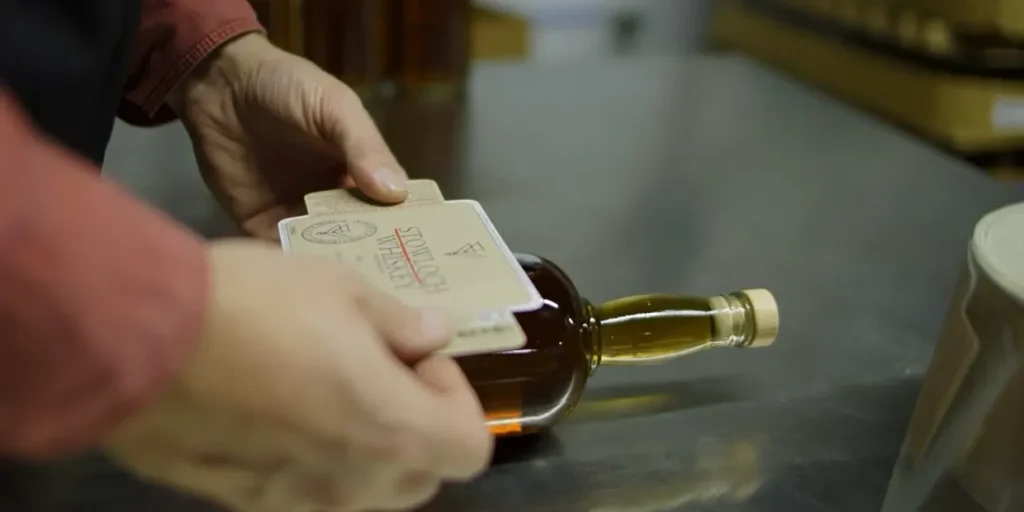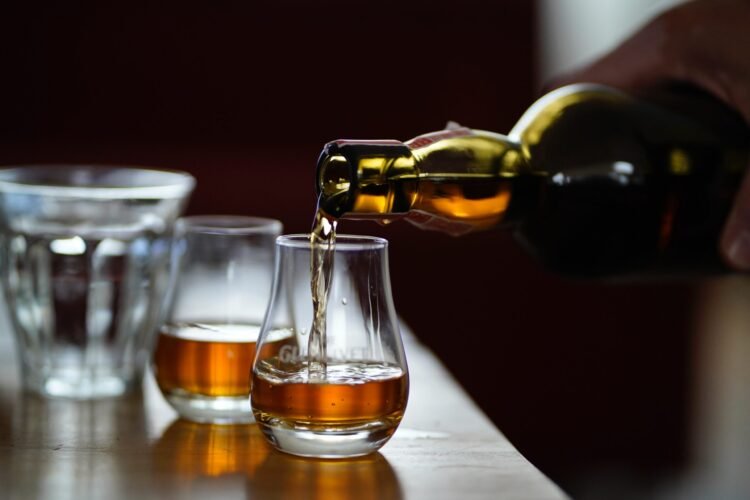Grain spirits are an essential category of distilled beverages, with a long history tied to culture, agriculture, and the art of distillation. Whether you’re sipping a smooth whiskey, a clear vodka, or a fiery grappa, all of these spirits share a common origin: grains. The transformation of grains into alcohol through fermentation and distillation is a fascinating process that has evolved over centuries, with each grain spirit offering its own unique flavor profile and characteristics.
In this article, we will explore the world of grain spirits, delving into the various types, the distillation process, and the key factors that influence their production. From understanding the role of different grains to exploring the rich traditions behind some of the world’s most popular spirits, we’ll break down how these alcoholic beverages are made and what makes them distinct. Whether you’re an enthusiast or a beginner, this guide will give you a comprehensive understanding of grain spirits and how they are crafted.
What Are Grain Spirits?
Grain spirits are distilled alcoholic beverages made primarily from various types of grains, such as barley, corn, wheat, rye, and even sorghum. These spirits are produced by fermenting the sugars in the grains and then distilling the fermented liquid to extract alcohol. The most common grain spirits are whiskey, vodka, gin, and rum (though rum can also be made from sugarcane). Each of these spirits is made through slightly different processes, but they all share the common foundation of grain fermentation and distillation.
While all grain spirits involve the same basic steps of fermentation and distillation, the types of grains used and the specifics of the process (such as aging, flavoring, and distillation method) contribute to the distinct flavors, aromas, and characteristics of each spirit. These spirits are produced worldwide, with variations depending on regional traditions, ingredients, and climate.
Types of Grain Spirits
There are several types of grain spirits, each with unique production methods, regional variations, and flavor profiles. Let’s take a closer look at the most popular types of grain spirits and what sets them apart from one another.
Whiskey: A Grain Spirit with Rich History
Whiskey (or whisky, depending on the region) is perhaps the most well-known of all grain spirits. Produced primarily from fermented grains such as barley, rye, corn, or wheat, whiskey is a broad category that encompasses many styles, including Scotch whisky, Irish whiskey, bourbon, rye whiskey, and Tennessee whiskey. The main difference between these varieties lies in the grain mixture used, the distillation process, and the aging conditions.
- Scotch Whisky: Made primarily from malted barley, Scotch whisky is known for its smoky and peaty flavor, which comes from drying the barley over an open fire. The aging process takes place in oak barrels, which gives Scotch its signature character.
- Bourbon: A distinctly American spirit, bourbon must contain at least 51% corn in its grain mash. It is known for its rich, sweet flavor profile, with notes of vanilla, caramel, and oak, derived from its aging process in new charred oak barrels.
- Rye Whiskey: Made from at least 51% rye, this type of whiskey has a spicier, more robust flavor profile compared to bourbon. It is commonly used in classic cocktails like the Manhattan.
- Irish Whiskey: Known for its smooth and approachable flavor, Irish whiskey is often triple-distilled and can be made from a mixture of barley and other grains. It is typically smoother than Scotch, with a lighter, less peaty character.
Vodka: The Neutral Grain Spirit
Vodka is another popular grain spirit, and it is known for its neutral, clean flavor. Vodka can be made from a variety of grains, including wheat, corn, rye, or even barley. The key characteristic of vodka is its distillation process, which focuses on producing a very high level of purity, resulting in a spirit with minimal flavor, aroma, and character.
The distillation process for vodka is highly refined and often involves multiple distillations to remove any impurities and unwanted flavors. Some vodkas undergo additional filtering, using materials like charcoal, to ensure an exceptionally smooth and neutral taste. This neutrality makes vodka a versatile base for cocktails, as it blends easily with a variety of mixers without overpowering the drink.
Gin: The Flavored Grain Spirit
Gin is another type of grain spirit that is distilled from grains (typically barley, wheat, or corn) and then flavored with botanicals, the most prominent of which is juniper berries. Gin is distinctive for its aromatic profile, which can range from herbal and floral to citrusy and spicy, depending on the botanicals used in the infusion.
While the base spirit of gin is made through fermentation and distillation of grains, the addition of botanicals and the subsequent distillation process (known as compound distillation or distilled gin) gives gin its signature flavor. Gin can be made in various styles, including London dry gin, Old Tom gin, and Geneva, each with its unique approach to botanicals and flavor balance.
Grappa: Italian Grain Spirit
Grappa is a traditional Italian spirit that is made by distilling grape pomace—the skins, seeds, and stems left over after winemaking. While grappa is typically associated with grapes, it can also be made from a combination of grape pomace and other grains like barley or wheat. Grappa is typically enjoyed as a digestif and is known for its strong, robust flavor.
Although grappa is often made from grapes, its production process shares many similarities with other grain spirits. The fermentation of the pomace or grain is followed by distillation, which extracts the alcohol and flavors from the fermented mass. Grappa is typically unaged, but some producers may age it in oak barrels, which imparts additional complexity.
The Distillation Process: Turning Grain into Spirit
At the core of every grain spirit is the distillation process. Distillation is the method by which alcohol is separated from fermented liquids to produce a concentrated, high-proof spirit. Understanding the distillation process is key to understanding how grain spirits are made.
Step 1: Fermentation
The journey of making grain spirits begins with fermentation. During fermentation, grains are converted into alcohol through the action of yeast. The grains are first mashed to extract their sugars, which are then fermented by the yeast to produce alcohol. This results in a low-alcohol liquid known as “wash” or “mash,” which is the base for distillation.
The grains used in fermentation vary based on the type of spirit being produced. For example, corn is typically used for bourbon, while barley is used for Scotch whisky. The specific grain used influences the flavor and mouthfeel of the final product.

Step 2: Distillation
Once the fermentation process is complete, the next step is distillation. Distillation works by heating the wash to separate alcohol from water and other compounds based on their different boiling points. The wash is heated in a still, where the alcohol evaporates and rises through a column or pot. As the vapor cools, it condenses back into liquid form, creating a higher-proof alcohol.
There are two primary types of stills used in distillation:
- Pot Stills: Commonly used for whiskey, brandy, and rum, pot stills are traditional distillation apparatuses that allow for greater control over the distillation process and can enhance the flavor of the final spirit.
- Column Stills: Often used for vodka and gin, column stills allow for continuous distillation, producing a more neutral and purified spirit. This type of still is efficient and allows for high-volume production.
Step 3: Aging (Optional)
Some grain spirits, such as whiskey and certain types of gin, undergo an aging process in wooden barrels. The aging process allows the spirit to absorb flavors and colors from the wood, which can give the drink a more complex character. Whiskey, for example, may age for several years in oak barrels, resulting in flavors like vanilla, caramel, and spice.
On the other hand, vodka and some types of gin do not undergo aging, as they are meant to retain their neutral flavor profiles. Grappa, too, is often unaged but can be matured for a more refined taste.
Step 4: Bottling
Once the distillation (and aging, if applicable) is complete, the spirit is diluted with water to bring it to the desired proof, filtered, and then bottled. The final product may be bottled as is or flavored with additional ingredients, such as botanicals in gin or a blend of different whiskies in blended Scotch whisky.
The Role of Grain Selection in Spirit Flavor
The type of grain used in the production of grain spirits plays a significant role in the flavor profile of the final product. The choice of grain affects the sweetness, body, and texture of the spirit. For example, corn-based bourbons tend to have a sweeter flavor, while rye-based whiskeys are spicier and more robust.
In gin, the type of base grain can also influence the flavor, with wheat-based gins often being smoother and softer, while barley-based gins may have a more malty character. The combination of the base grain with other ingredients—such as botanicals in gin or the oak aging process in whiskey—creates the distinctive flavors that define each spirit.
Conclusion: The Craft of Grain Spirits
Grain spirits represent an incredibly diverse and rich category of distilled beverages. From the earthy complexity of whiskey to the neutral clarity of vodka, each spirit offers something unique. The production process for grain spirits is both an art and a science, requiring careful selection of ingredients, precision in distillation, and attention to detail in aging and bottling. Understanding the fundamentals of how grain spirits are made helps us appreciate the complexity of these beverages and the skill involved in their creation.
Whether you enjoy the smooth warmth of whiskey, the clean clarity of vodka, or the herbal complexity of gin, grain spirits offer a wide variety of flavors and experiences. By exploring the history, production, and nuances of these spirits, we gain a greater appreciation for their role in the world of distillation and the broader landscape of alcoholic beverages.































